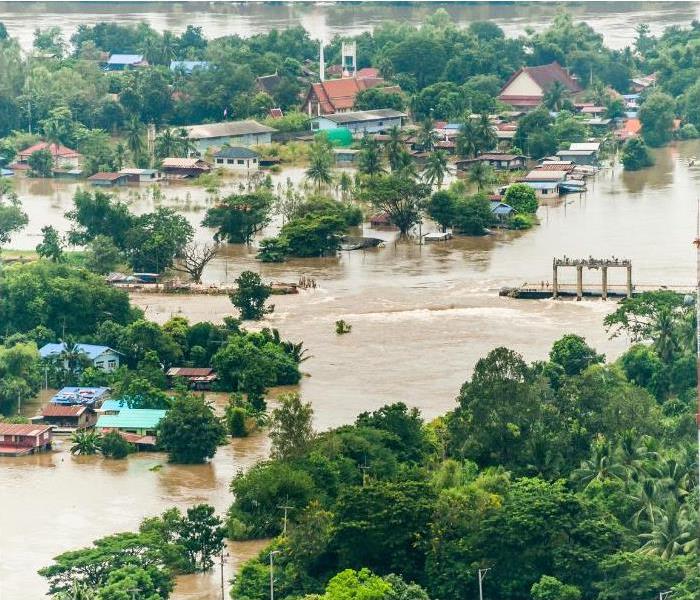What to Do After a Flood
9/28/2022 (Permalink)
Floods aren’t entirely unpredictable; depending on where you live, weather patterns and seasons are often good indicators of when rainfall might come. SERVPRO® of Denton is no stranger to water damage and knows why it’s essential to know how to prepare for a flood. As experts in water damage restoration, we want to help you plan to prevent disaster. If you don’t have a flood preparedness checklist, don’t worry. We’re here to help you build that plan.
Remember, when a flood occurs, your physical safety—and the safety of those in your home—should be your priority. When in doubt, stay on higher ground or an upper floor and follow the guidance of local officials and experts in conjunction with your flood checklist to help ensure no one gets hurt. Once your area has been declared safe, follow this quick list of protocols:
- Do not enter the home if you see loose or damaged power and gas lines
- Avoid any areas with foundation cracks or severe damage
- Do not enter any space where the home’s structure is compromised and may collapse
- Avoid stepping in large puddles of water if power lines are damaged
- Watch out for wild animals displaced during the flood that may have entered your home
- Leave the premises immediately if you smell natural or propane gas
- Watch out for hazardous material (i.e., batteries, fuel, etc.) that may be loose in your home
- Follow the guidelines of local authorities to avoid potential harm
Once your home is officially clear of potential hazards, it’s time to look to the future and restore the damage done.
The Last Step: Professional Help
SERVPRO® of Denton professionals are trained to inspect flood-damaged areas and assess your property’s needs. The inspection process often includes four primary phases:
- Identify and stop any flowing water sources
- Classify the water contamination level
- Survey the water damage and create a restoration plan
- Address immediate needs, like moving furniture, to prevent further damage
Once the initial inspection is complete, we’ll work with you to execute a comprehensive restoration plan. Our water damage repair process often includes several services from cleaning to deodorization, drying, construction repairs, and ongoing monitoring. Our scientific approach to water removal and cleanup will help ensure that you can return to normal as soon as possible and mitigate further damage.
Create Your Own Flood Safety Checklist
With this information at your fingertips, you should feel confident in how to prepare for a flood or other natural disaster. To add even more resources to your safety arsenal, check out our additional emergency resources to help ensure you and your family stay safe.





 24/7 Emergency Service
24/7 Emergency Service
